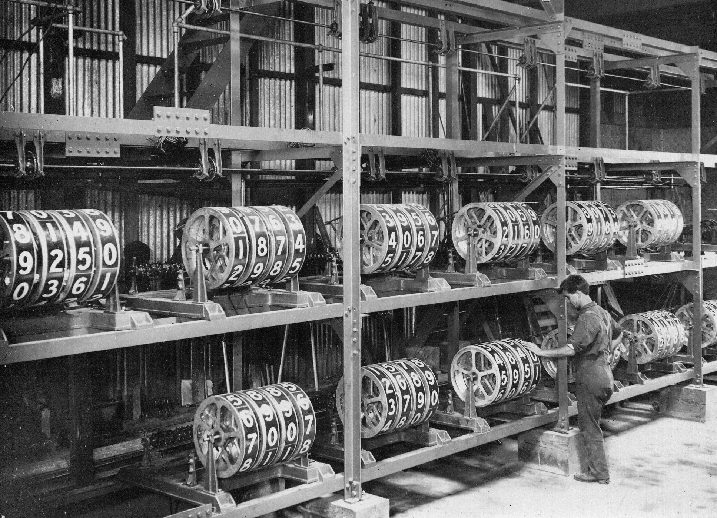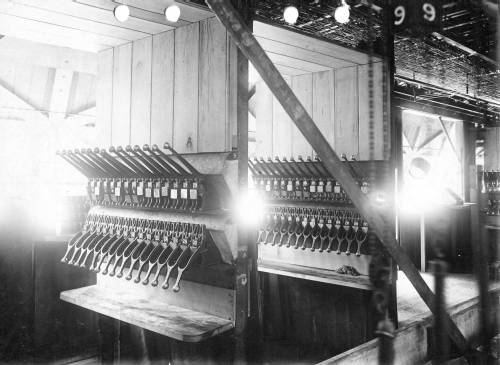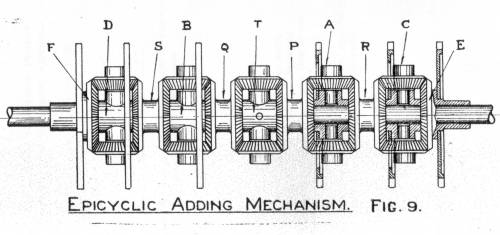Sweepstakes: impressive engineering solutions for betting on the run
- Transfer

Horse racing has been popular since the ancient Greeks. Often they were called the sport of kings, and they were the first place to make friendly bets. Over time, private bets between friends turned into a bookmaker, and the chances of winning gradually flowed to the owners of the institution.
In the late 1860s, Parisian entrepreneur Joseph Oller invented a new form of betting called pari-mutuel. In this scheme, the bidders are competing with each other, not with the establishment. All bets are collected together, and the win is divided between those who bet. In the system of pari-mutuel, chances are more organic than when playing with a bookmaker, who is thirsty for profit.
Oller's method came to many liking. He offered particular and transparency, which attracted him even more. But in order to demonstrate total betting amounts and changing odds in real time, quick calculations were required, and these calculations represented the bottleneck of the system. In the early 1900s, inventor George Julius changed technology forever, assembling a car that automatically counts votes in his garage.

Engraving “Sunday Cockfights in Madrid”
Horse races were extremely popular entertainment in nineteenth-century Europe, due in part to economic growth due to the industrial revolution. The popularity of horse racing has grown even more after the introduction of rates on the system pari-mutuel. Oller invented his method in Spain, watching a quarrel about betting on cockfighting. He created this system so that a knowledgeable player would win. In fact, he wanted to exclude bookmakers with their ability to correct chances. Instead of players betting against the owners of the establishment, thanks to the method of Oller, they could bet against each other. In this case, the chances of winning float until the bets run out.
In the pari-mutuel system, all bets on a particular horse are summed up. After determining the winner, the commission is deducted from the sum of all bets - it is sent to the owners of the institution. The remaining amount is divided between those who bet on the winner, giving a certain profit for each dollar delivered. If $ 10 was given $ 10 profit, it means that the chances of winning were 10-1. Various systems for betting have become known as betting.

One of the early betting
Totalies ... what? ..
In short, the totalizator display consists of several counters used to display subtotals. The term quickly became synonymous with the pari-mutuel betting system. Sweepstakes are associated with sports betting, but they are also used to show donations received on telethon.
At the beginning of the story, pari-mutuel betting was conducted manually on slate boards. With the growing popularity of rates, the concept of the tote has been updated to keep up with demand. Many different cars were built for counting, and they appeared on the tracks as an alternative. Some sweepstakes owners even worked on the road, with a mobile cart.
Players tended to trust cars more than boys with boards, but their faith was not valid. The machines were driven by people, some of whom were not against muhlezh in rates. In any case, the popularity of horse racing continued to grow. It was necessary to keep several tote displays next to satisfy the demand. On large racecourses, small portable displays began to move into special buildings in order to be able to handle a large number of stakes.

Choosing a winner
George Julius was an engineer all his life. From early childhood he was interested in mechanical devices, especially for hours. He was born in England, but moved to Australia and then to New Zealand, as his father was promoted in the Anglican Church. Julius studied mechanical engineering and worked as an engineer both on the railway and on logging.
In his spare time, Julius built a car to automatically count votes in elections. He offered it to the Australian state authorities, but they did not appreciate the project. Julius's friend somehow took him to the races to open another possibility of using the machine. Because of his religious upbringing, he never went to races and participated in gambling. Julius was intrigued by the computational problems associated with betting on the pari-mutuel system, and he decided to create a device that could handle parallel arithmetic. The next four years, he built a small automatic tote in the garage.

Installation location of the first automatic tote. Hippodrome Ellerslie, Auckland, New Zealand.
Multistorey calculations
Julius's first commercial tote was installed in 1913 at the Ellerslie Racecourse in Auckland. The car was so big that it needed a multi-storey building, called the "tote house". The machine could sum up bets for a maximum of thirty horses. She showed real-time approximate chances of winning for each horse, the total intermediate amount for each horse and the total amount of bets. On the first floor of the house tote was thirty betting offices. The rest of the building housed the car. Rates and odds were shown through the windows of the second floor. Digital displays were an integral part of the mechanism - they were large numbers printed on round drums.

The first automatic tote was completely mechanical, and the pattern of its operation resembled a clock. The energy for the work was given by metal weights attached to bicycle chains, thrown over the asterisks of the shaft. The car worked for only five years, after which it was replaced with electromechanical. Thus began the story of Auckland Totalisators Limited (ATL), which dominated international markets for the next 50 years.

In the process of placing bets, the cashier pulled the lever corresponding to the horse chosen by the player. The lever was attached to one of the 900 steel cables at the top - one cable per horse in each of the box office windows. Cables can be seen in the upper right corner of the photo. Bets were taken in the minimum monetary units, and each lowering of the lever increased the rates.
To convert parallel data entry from all banks to bets on each of the horses, Julius invented a mechanism, which he called a summing shaft. On the sweepstakes in Ellerslie for each of the horses was a differential adder. The adder consisted of sets of epicyclic gears located on the shaft. The trigger wheel on each of the gear sets prevented its free rotation. Summing rolls were folded to calculate the total amount of bets, which showed the result at the very top of the scoreboard. Separate mechanisms showed approximate chances, taking into account the total bet on the current horse, the total amount of bets and some trigonometry.

The tote displays quickly became electromechanical. Instead of weights, they were turned by motors. Rotary switches allowed the ticket-selling machines to use the trigger wheel on the summing shaft together.
ATL placed sweepstakes around the world and fully conquered the market until computers made its products unnecessary. Totalyte displays were among the first multi-user real-time systems and helped pave the way for parallel computing.
